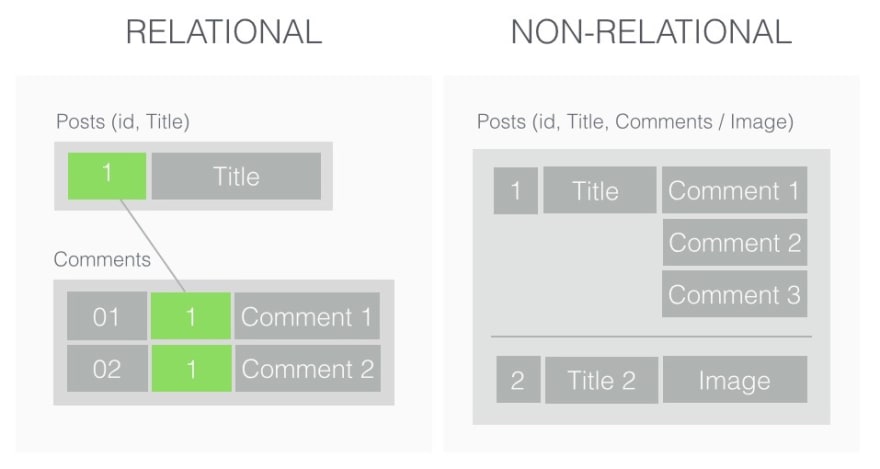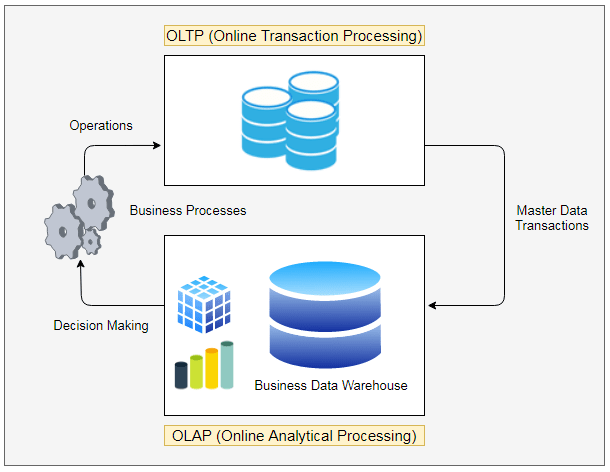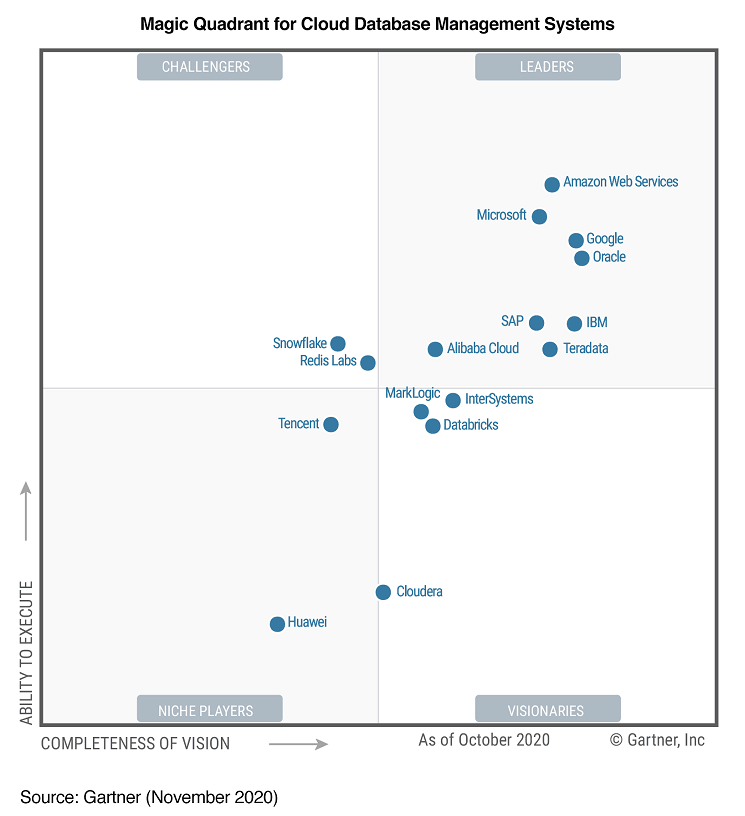An Interest In:
Web News this Week
- April 16, 2024
- April 15, 2024
- April 14, 2024
- April 13, 2024
- April 12, 2024
- April 11, 2024
- April 10, 2024
AWS Database Services Fundamentals
A database is a collection of information that is organized in a way that can be easily accessed, managed, and updated. Computer databases often contain record sets or data files, which contain information about sales transactions or interactions with specific customers. Databases are important back-end systems used to store, manage, update, and analyze data for all types of applications, from small back-office systems to consumer and mobile web applications on a global scale. Most databases use structured query language (SQL) to write and query data.
Databases have evolved dramatically since their inception in the early 1960s. Navigation databases, such as the hierarchical database (which was based on a tree-like model and only allowed a one-to-many relationship), and the network database (a more flexible model that allowed multiple relationships), were the original systems used to store and manipulate data. Although simple, these early systems were inflexible. In the 1980s, relational databases became popular, followed by object-oriented databases in the 1990s. More recently, NoSQL databases emergedin response to the growth of the internet and the need for greater speed and processing of unstructured data. Today, the cloud database and separate databases are opening up new ways as to how to collect, store, manage and use the data.
According to their type, the databases can be classified as relational and non-relational databases. Relational databases became popular in the eighties, the elements of a relational database are organized as a set of tables with columns and rows. Relational database technology provides the most efficient and flexible way to access structured information. NoSQL or non-relational databases allow unstructured and semi-structured data to be stored and manipulated, unlike a relational database, which defines how all the data inserted into the database should be composed. NoSQL databases became popular as web applications became more common and complex.
The databases can also be classified according to their type of workload into operational databases (OLTP - Online Transaction Processing) or analytical databases (OLAP - Online Analytical Processing). OLTP systems are databases oriented to transaction processing. A transaction generates an atomic process (which must be validated with a commit, or invalidated with a rollback), and that may involve data insertion, modification and deletion operations. The transactional process is typical of operational databases. OLAP systems are databases oriented to analytical processing. This analysis usually involves, generally, the reading of large amounts of data to get to extract some type of useful information that is helpful for decision making, such as sales trends, consumer behavior patterns, elaboration of complex reports, etc.
AWS offers a wide variety of custom databases for your specific application use cases. Our fully managed database services include relational databases for transactional applications, non-relational databases for Internet-scale applications, a data warehouse for analytics, an in-memory database for caching and workloads in real time, and a graphs database to create applications with strongly connected data. With AWS Database Migration Service, migrating existing databases to AWS is easy and cost-effective.
AWS Databases were designed from the ground up to support the scale, performance, and availability demands of modern globally distributed applications with microservices architectures.
AWS offers 15 database engines and continues to grow, including relational and non-relational types for every application need. The types of AWS databases are described below:
Relational
Description: Relational databases store data with predefined schemas and relationships between them. These databases are designed to support ACID transactions, and maintain referential integrity and strong data consistency.
Use cases: Aplicaciones tradicionales, ERP, CRM y e-commerce
AWS service: Amazon Aurora, Amazon RDS, Amazon Redshift
Key-value
Description: Key-value databases are optimized for common access patterns, typically to store and retrieve large volumes of data. These databases deliver quick response times, even in extreme volumes of concurrent requests.
Use cases: High-traffic web apps, e-commerce systems, gaming applications
AWS service: Amazon DynamoDB
In-memory
Description: In-memory databases are used for applications that require real-time access to data. By storing data directly in memory, these databases deliver microsecond latency to applications for whom millisecond latency is not enough.
Use cases: Caching, session management, gaming leaderboards, geospatial applications
AWS service: Amazon ElastiCache for Memcached, Amazon ElastiCache for Redis, Amazon MemoryDB for Redis
Document
Description: A document database is designed to store semistructured data as JSON-like documents. These databases help developers build and update applications quickly.
Use cases: Content management, catalogs, user profiles
AWS service: Amazon DocumentDB (with MongoDB compatibility)
Wide column
Description: A wide column store is a type of NoSQL database. It uses tables, rows, and columns, but unlike a relational database, the names and format of the columns can vary from row to row in the same table.
Use cases: High scale industrial apps for equipment maintenance, fleet management, and route optimization
AWS service: Amazon Keyspaces (for Apache Cassandra)
Graph
Description: Graph databases are for applications that need to navigate and query millions of relationships between highly connected graph datasets with millisecond latency at large scale.
Use cases: Fraud detection, social networking, recommendation engines
AWS service: Amazon Neptune
Time series
Description: Time-series databases efficiently collect, synthesize, and derive insights from data that changes over time and with queries spanning time intervals.
Use cases: IoT applications, DevOps, industrial telemetry
AWS service: Amazon Timestream
Ledger
Description: Systems of record, supply chain, registrations, banking transactions
Use cases: Systems of record, supply chain, registrations, banking transactions
AWS service: Amazon QLDB
Strategy for selecting a database
The optimal database solution for a system varies depending on the requirements for availability, consistency, partition tolerance, latency, durability, scalability, and query capacity. Many systems use different database solutions for various subsystems and allow different features to improve performance. Selecting the wrong database features and solutions can result in lower performance efficiencies.
When selecting a database service, consider the dimensions and choose the one that best suits each of your requirements and components of your application and architecture.
AWS Leader in Gartner's New Magic Quadrant
LIndustry analyst firm Gartner has published a new report, the Magic Quadrant for Cloud Database Management Systems, naming AWS as a Leader and placing AWS highest among the 16 vendors evaluated for Ability to Execute. This report is Gartners first database and analytics report exclusively evaluating cloud-based services, doubling down on their assertion in a June 2019 report that The Future of the DBMS Market is Cloud. More info here.
AWS Databases free tier
he AWS Free Tier offers users an opportunity to explore products for free, with offers including products that are always free, free for 12 months, and short-term free trials. AWS offers the widest selection of purpose-built databases, allowing you to save, grow, and innovate faster.
Build database solutions using these product offerings of the AWS Free Tier.
To obtain updated information on AWS database services, I invite you to follow their page AWS Databases & Analytics on Linkedin.
Later, I will delve into each of the AWS database services. I hope this information is useful !!
Follow us:
Original Link: https://dev.to/aws-builders/aws-database-services-fundamentals-4ml6
Dev To
 An online community for sharing and discovering great ideas, having debates, and making friends
An online community for sharing and discovering great ideas, having debates, and making friendsMore About this Source Visit Dev To





